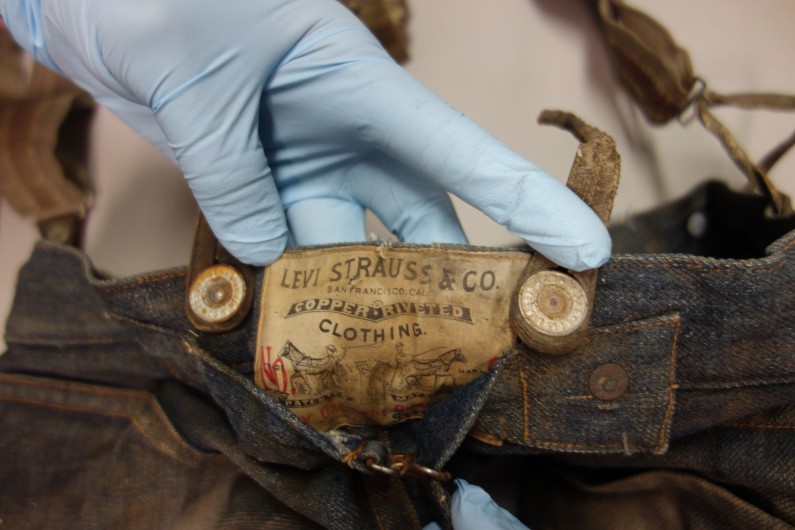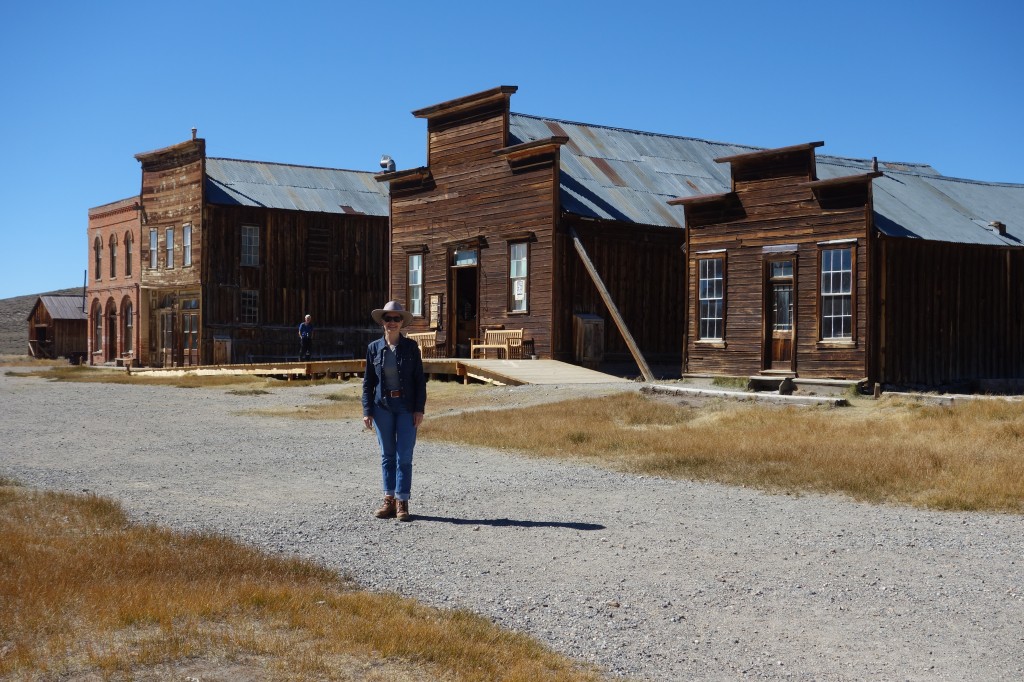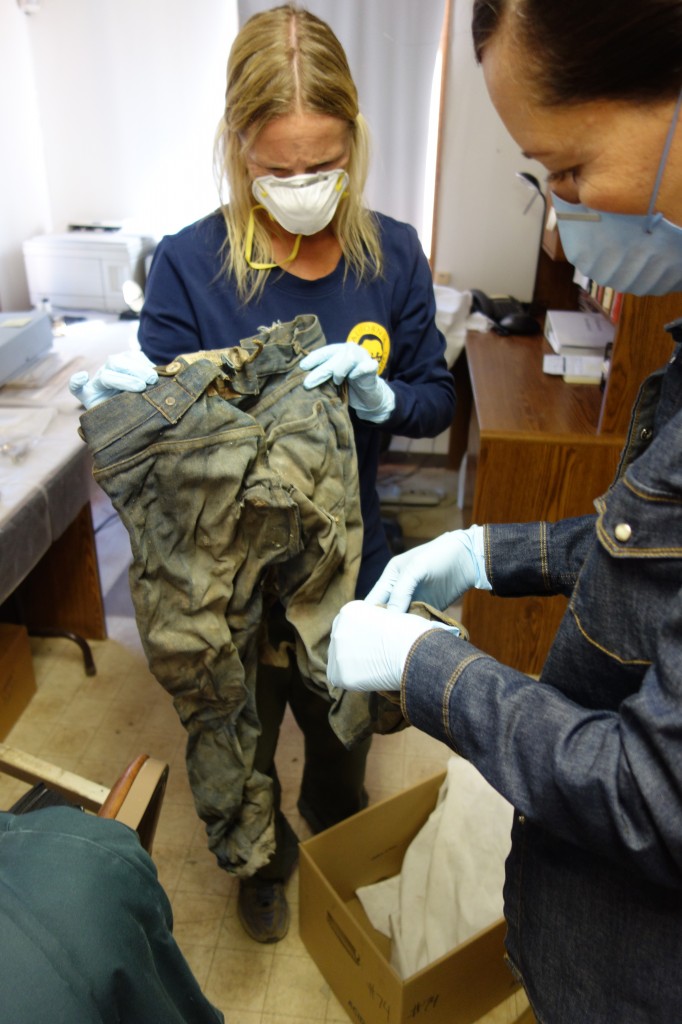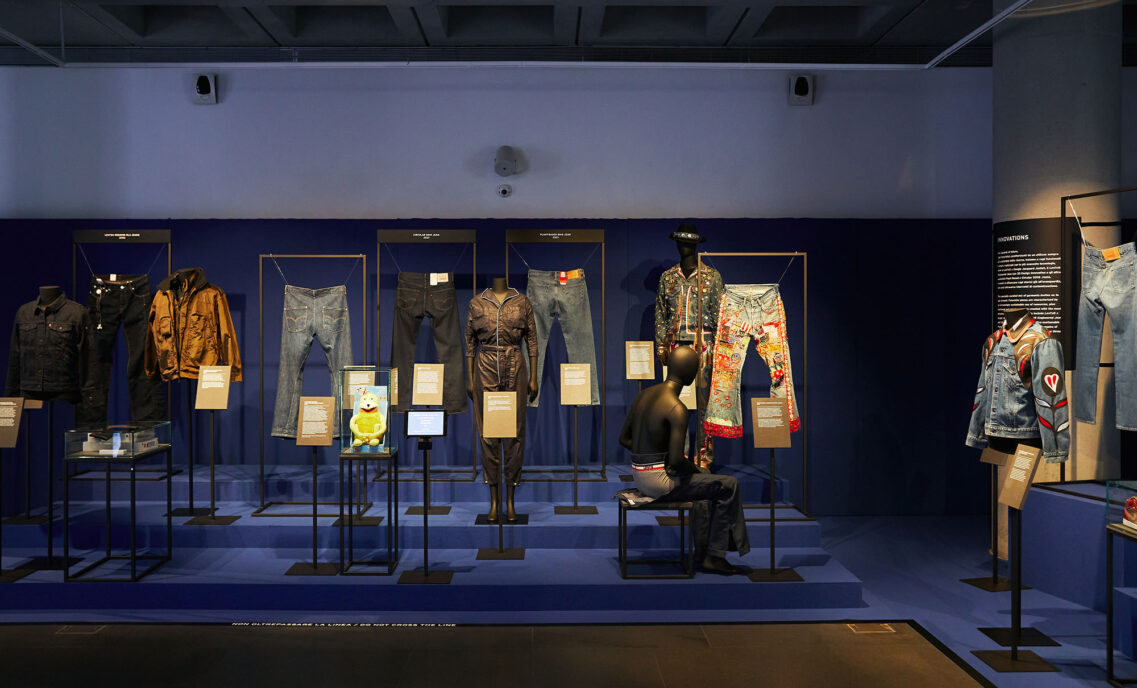Jeans hidden in air vent see daylight many decades later
Since taking over as historian, I have been eager to make my own denim discovery — to find a pair of 1880s waist overalls in an abandoned mine or a remote desert cave. I did not expect a discovery in the roof of a town hall. The location? Bodie State Historical Park, a genuine California gold mining ghost town.
Golden Ghost Town
Bodie is one of the best preserved ghost towns in the United States. Located in the Sierra Nevada, Bodie reached its heyday in the 1880s, when the population surged to almost 10,000 after gold was discovered in 1859. Bodie gained a reputation as one of the wildest towns in the West, peppered with duels, murders and brothels. By the 1940s, the town was abandoned. Today, as many as 1,400 people a day flock to Bodie during the summer.
To maintain the town’s authentic condition, the state park employs a plan of “arrested decay”: minimal repair of buildings to preserve the original structures. This is limited to bracing structures to stop them from falling and to re-shingling roofs. It was while re-shingling the roof on Miners Union Hall that a maintenance crew found something unusual.
Fabulous Find
Supervisory Ranger Joshua Heitzmann walked me to Miners Union Hall when I arrived at Bodie several weeks ago. Now a museum, Miners Union Hall is filled with mining artifacts, a pump organ and even a glass-sided funeral carriage. Ranger Denise Parodi took me behind the theater stage, walking past penciled signatures of vaudevillians who had performed at Bodie. “This is about where workers pulled them out,” she said, explaining how a crumpled pair of Levi’s® waist overalls and a black felt hat were found beneath roof joists where the roofline of the building connected with an annexed back section.
Why stuff the jeans into an air vent? “Adding insulating materials like jeans was not unusual in a place where snow reaches up to 20 inches during the winter,” Ranger Denise said. I thought of the walls at Levi’s® Plaza insulated with shredded jeans. Using Levi’s® denim for insulation demonstrates how tough and durable Levi’s® jeans have been for generations. Our blue jeans were created as an original sustainable product — built to last “For Men Who Toil.” It seems good ideas never die.
While I enjoyed seeing where the overalls were found, I couldn’t wait to get a glimpse of the main attraction. Curator Natalie Davenport met Ranger Josh and me at Bodie’s museum storage area. We pulled on gloves and masks as a precaution against the Hanta virus since the pants were found covered in mouse droppings. Natalie opened up a gray artifact box with a stuffed pillowcase inside. As soon as I spotted the waist overalls with only one back pocket, I knew the pants were pre-1900.
Denim Details
Here are the features of the Bodie Bottoms found in the Miners Union Hall roof air vent:
- Lot 203 Waist Overalls (Lot 201® was first introduced in 1890 as a second-tier value product compared with the 501®).
- Non-LS&Co. suspenders attached.
- White linen patch.
- One back pocket. (The Lot 201® jean didn’t feature a second pocket until 1901.)
- Paint stains. The wearer may have worked in carpentry but probably did not work in the Bodie mine because the overalls would not have survived given the lighter weight of the fabric.
As for me, I’ve decided that finding Levi’s® jeans in a rooftop air vent is just as exciting as a finding them in a cave or mine. The experience had all the essential elements — an air of mystery, the excitement of discovery, and the awe and inspiration of finding LS&Co. vintage garments in the original location where they were worn —in this case, a late 1800s gold mining town.









